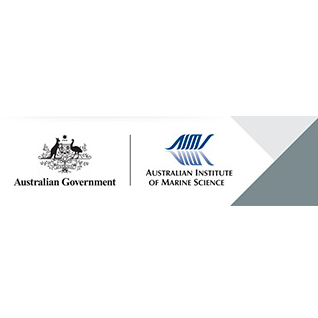Brief description
Surface sediments were collected in January 1994, after oil was dumped along a road adjacent to sugar cane fields and wetlands near Yorkys Knob, north Queensland. Samples were taken from a variety of visually oiled and unoiled wetland areas, the oiled road, and the stock pile of oiled sediments that had been scraped off the road during initial clean up efforts.Core samples were also collected using a hand coring device, made from 4 cm diameter aluminium pipe. Cores were taken by pounding the tube into the sediment and twisting it back up to the surface. Cores were removed, sliced with a steel knife and samples were taken from the centre of specific depth layers (0-2, 10-12, 16-18, 25-27 and 38-40 cm) and put into labelled jars. The soil samples were packed on ice and taken to a commercial laboratory in Cairns, which sent the samples to their Melbourne laboratory for analysis of total hydrocarbons by gas chromatography with flame ionisation detection (GC-FID).After evaluation of the first set of chemical data, three sites were selected for longer term impact assessment. Site 3 was in a Melaleuca forest and samples were collected in three areas: heavily oiled, 5 m from the road (3A); moderately oiled at 15 m from the road (3B); and unoiled at 30 m from the road (3C). Site 6 was located 5 m from the road in dense intertidal mangrove forest composed predominantly of Avicennia marina. Site 5 was a small tributary, which drained the most heavily oiled wetlands and flowed into Richters Creek. Sampling at these sites was conducted in January and June 1994, May and July 1995 and the samples sent to the commercial laboratory for analysis. The final samples were collected in December 1995 and were analysed at AIMS for individual components. Oil composition was determined by three independent methods of analysis: (1) scanning ultraviolet fluorescence (UVF), (2) GC-FID, and (3) Selected IonMonitoring GC/Mass Spectroscopy (GC/MS) for individual aromatic hydrocarbons and triterpane biomarkers.QDEH also sank 25 cm diameter aluminium tubes into the sediment at 5 monitoring sites, to a depth of around 3 m, to determine if oil was leaching from the contaminated sediments into ground water. Sampling was done with a stainless steel tube, after each bore was cleared of water and allowed to refill. Water was collected and 500 ml drained into 1 litre glass jars to ensure that no oil from previous accumulations of surface water contaminated the ground water samples. The samples were placed on ice and airfreighted along with the sediments for analysis.Additional sampling was done in May 1995 at six sites along the roads in the sugar cane farm. These sites were excavated with a shovel and each layer was examined for visual and olfactory presence of oil. Samples for chemical analysis were taken in layers likely to contain oil, if it had seeped through the road into subsurface layers, such as into clays at ground water level. These samples were analysed at AIMS. An estimated 76,000 litres of a mixture of fuel and lubricating oils were dumped on a road, adjacent to sugar cane fields near Yorkys Knob, north Queensland in January 1994. The oil soaked into sediment and contaminated a band along the road 30m wide and 200m long. Mangroves and a Melaleuca forest were impacted.AIMS was contracted by the Queensland Department of Environment and Heritage (QDEH) to assist in producing an impact assessment. The specific tasks undertaken were:1. supervision and participation in sediment sampling2. an assessment of the analytical methods used by the contracting commercial laboratory3. interpretation of the analytical data in terms of oil composition, its probable toxicity, and the rate and patterns of dispersion and degradation of the contaminant hydrocarbons4. detailed chemical analysis of initial and final samples5. comparison of the results with data obtained from long term impact assessments of oil spills in other tropical wetlands. At the time that the dumping occurred, the surface oiling of powdery dirt roads in sugar cane fields had been practiced for about 20 years in Queensland.Lineage
Maintenance and Update Frequency: notPlannedNotes
CreditBurns, Kathryn A, Dr (Principal Investigator)
Modified: 23 06 2025
text: westlimit=145.72721600532535; southlimit=-16.820069705990345; eastlimit=145.72721600532535; northlimit=-16.820069705990345
Contrasting impacts of localised versus catastrophic oil spills in mangrove sediments: Burns KA and Codi S (1998) Contrasting impacts of localised versus catastrophic oil spills in mangrove sediments. Mangroves and Salt Marshes 2:63-74.
local : articleId=1156
Yorkeys Knob oil spill: final report on impact assessment and remediation efforts: Burns KA (1995) Yorkeys Knob oil spill: final report on impact assessment and remediation efforts. Australian Institute of Marine Science. 21 p.
local : articleId=8971
- global : 43004c79-392a-4c2e-b3df-ebaeca0cbc9b


